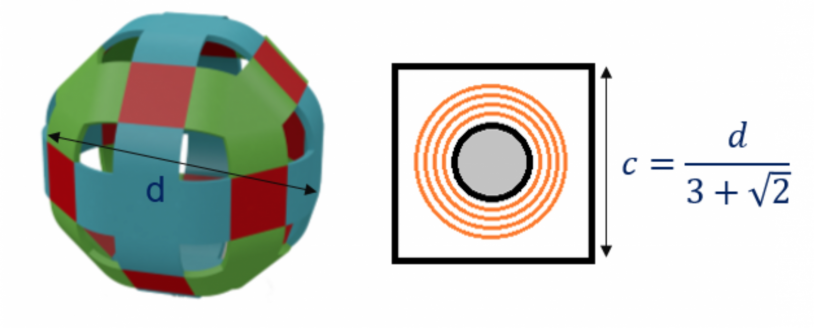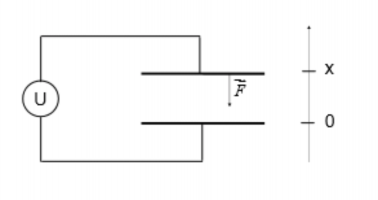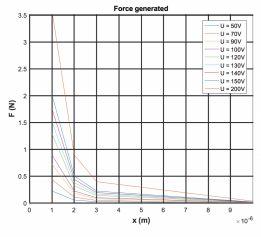Context of AS2M Contribution
In the context of B3PM project, AS2M department is investigating the actuation mode of the catoms. Their objective consists in providing an efficient actuation that allows catoms to stick (latch) to each other and to move around each other. We started by focusing on the latching of the catoms. To this end, they are exploring two main strategies for the latching of the catoms: Magnetic latching with permanent magnet or electromagnets and Electrostatic latching.
Catom Actuation Mode
The magnetic latching consists on a computer controlled magnetic coils. As show in Fig. 1, the physical mechanism consists of planar coils distributed on the catom’s surface (red areas). To prevent conduction, the surface of the catom could be covered with insulator, and an on-board circuit is embedded to control each coil. Such kind of actuators has many advantages compared to known solenoid coils and electrodes, as they:

Figure 1: Electromagnet on a catom
- are easy to distribute on complex surface by using direct ink writing techniques
- are thin and compact actuators (less bulky)
- require a low power supply
- use active magnets
However, it has been found through theoretical investigations that the available surface is not sufficient and makes these electromagnet option not effective. In the other hand, the permanent magnets provide important forces but they require a strong magnetic field in order to perform their demagnetisation.

There is also the problem of constantly streaming energy to the magnets to keep it latched. Regarding those observations, they have chosen to study the electrostatic actuation mode. The objective is to make a catom connector acting as a capacitor in contact with another catom. With one positively charged and the other one negatively charged a force will be produced and will allow latching the two connectors. Figure 2 shows the basic principle of this mode of actuation.
The generated force is given by equation (1) where ε is the permittivity of the medium between our two connectors; A is the surface of the connector and U is the applied voltage. Such configuration allows reaching a great amount of generated force. For instance, Fig.3 shows the generated force according to the distance and the applied voltage between two connectors.

As can be seen from the curves, when a connector is a little bit further from another, the lesser is the force exerted between them. Nevertheless, with a light catom the generated force will be sufficient to perform latching at least from theoretical point of view. A test on a real catom will be carried out to validation experimentally this mode of actuation.

